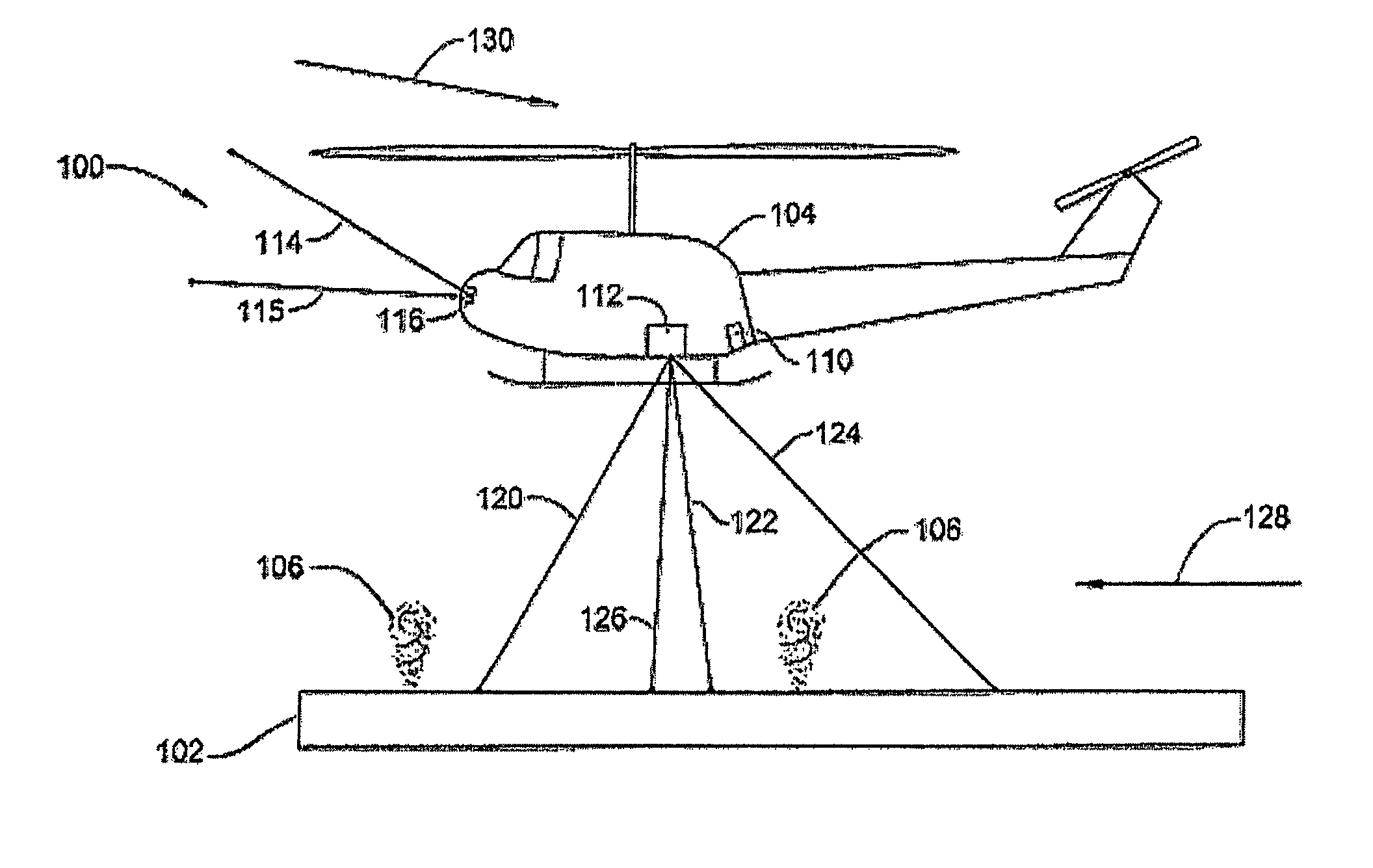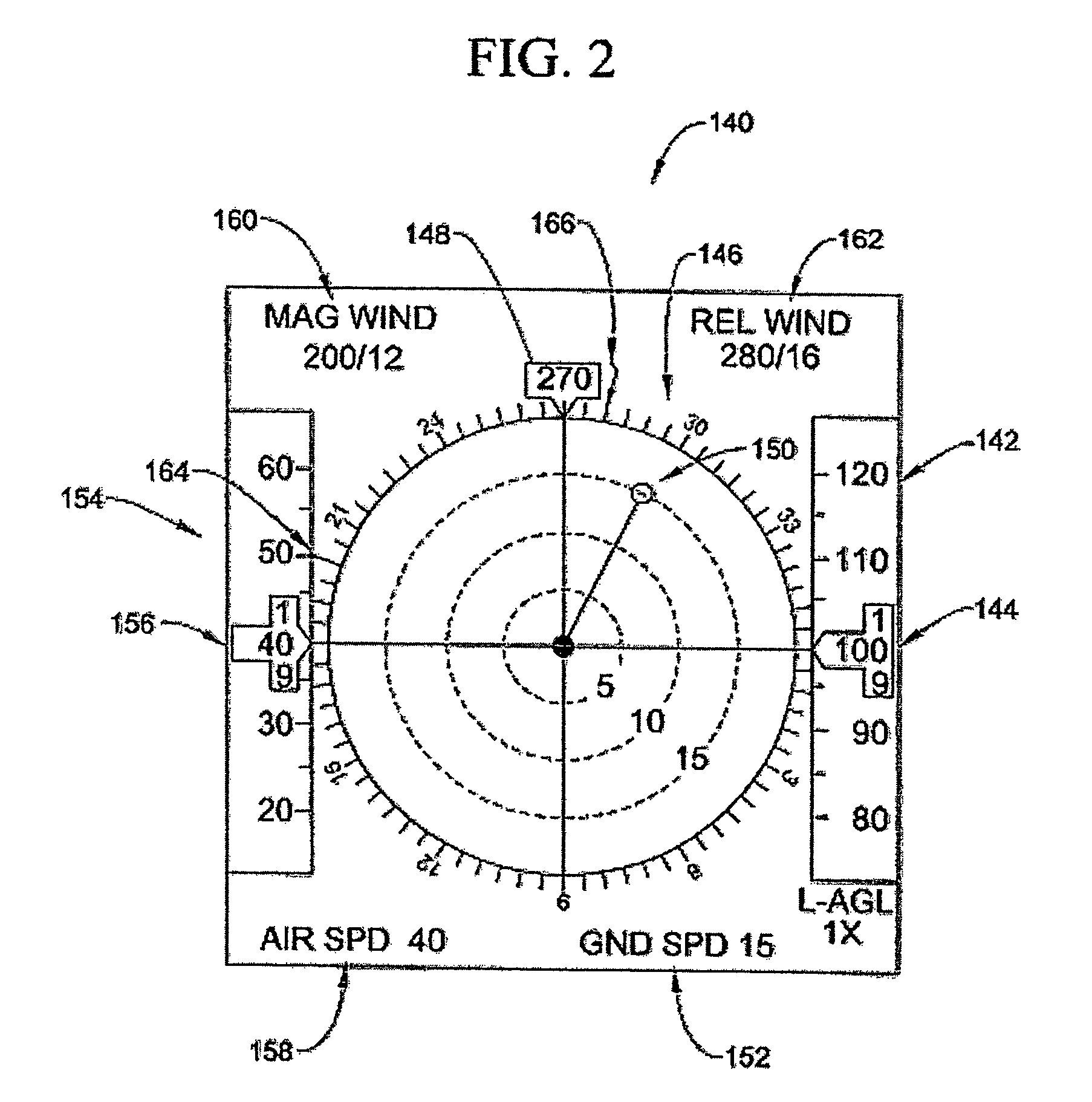Optical system for detecting and displaying aircraft position and environment during landing and takeoff
a technology of optical system and aircraft position, applied in the field of systems, can solve the problems of reducing visibility, difficult to operate aircraft, particularly helicopters, landing and takeoff operations, etc., and achieve the effect of reducing the possibility of lateral drift, effective display, and easy and graphic determination
- Summary
- Abstract
- Description
- Claims
- Application Information
AI Technical Summary
Benefits of technology
Problems solved by technology
Method used
Image
Examples
Embodiment Construction
[0022]Reference will now be made in detail to the preferred embodiments of the present invention, examples of which are illustrated in the accompanying drawings.
[0023]FIG. 1 depicts an aircraft landing site 100 and an aircraft 104 that is landing or taking off (or hovering), which includes a system for detecting the position and motion of aircraft 104 according to the disclosed embodiments. While the aircraft 104 illustrated in FIG. 1 is a helicopter, the invention is useful with other types of aircraft as well.
[0024]The invention is useful in many different conditions but finds particular utility in those situations where the ground 102 in the landing area comprises easily disturbed sand particles 106 that aircraft 104 stirs up as it lands or takes off, typically because of the downwash from the rotor blades of the helicopter 104. In many environments, such as that of a desert, the sand 106 reduces the visibility by such a degree that the pilot cannot see the ground, which creates ...
PUM
 Login to View More
Login to View More Abstract
Description
Claims
Application Information
 Login to View More
Login to View More - R&D
- Intellectual Property
- Life Sciences
- Materials
- Tech Scout
- Unparalleled Data Quality
- Higher Quality Content
- 60% Fewer Hallucinations
Browse by: Latest US Patents, China's latest patents, Technical Efficacy Thesaurus, Application Domain, Technology Topic, Popular Technical Reports.
© 2025 PatSnap. All rights reserved.Legal|Privacy policy|Modern Slavery Act Transparency Statement|Sitemap|About US| Contact US: help@patsnap.com



